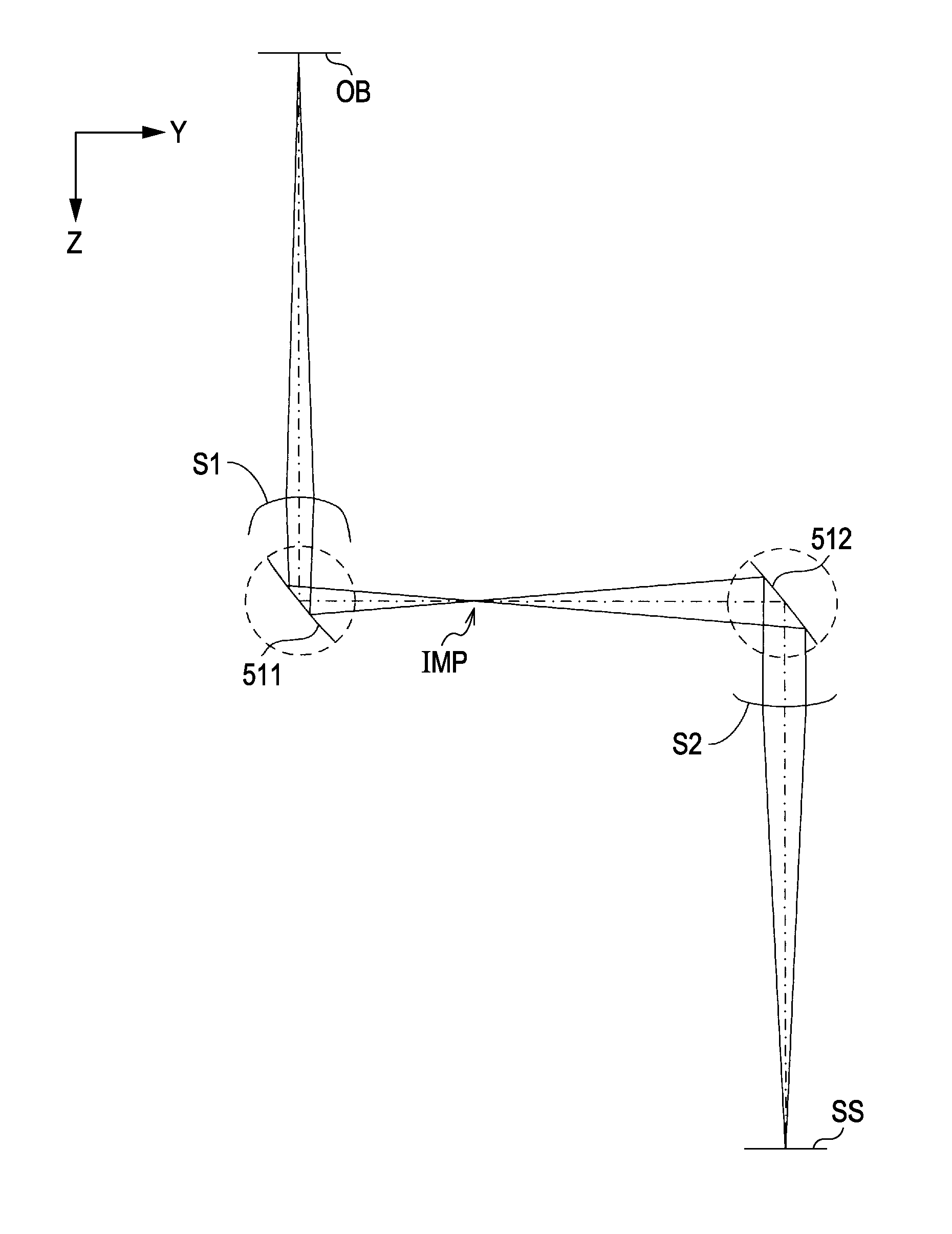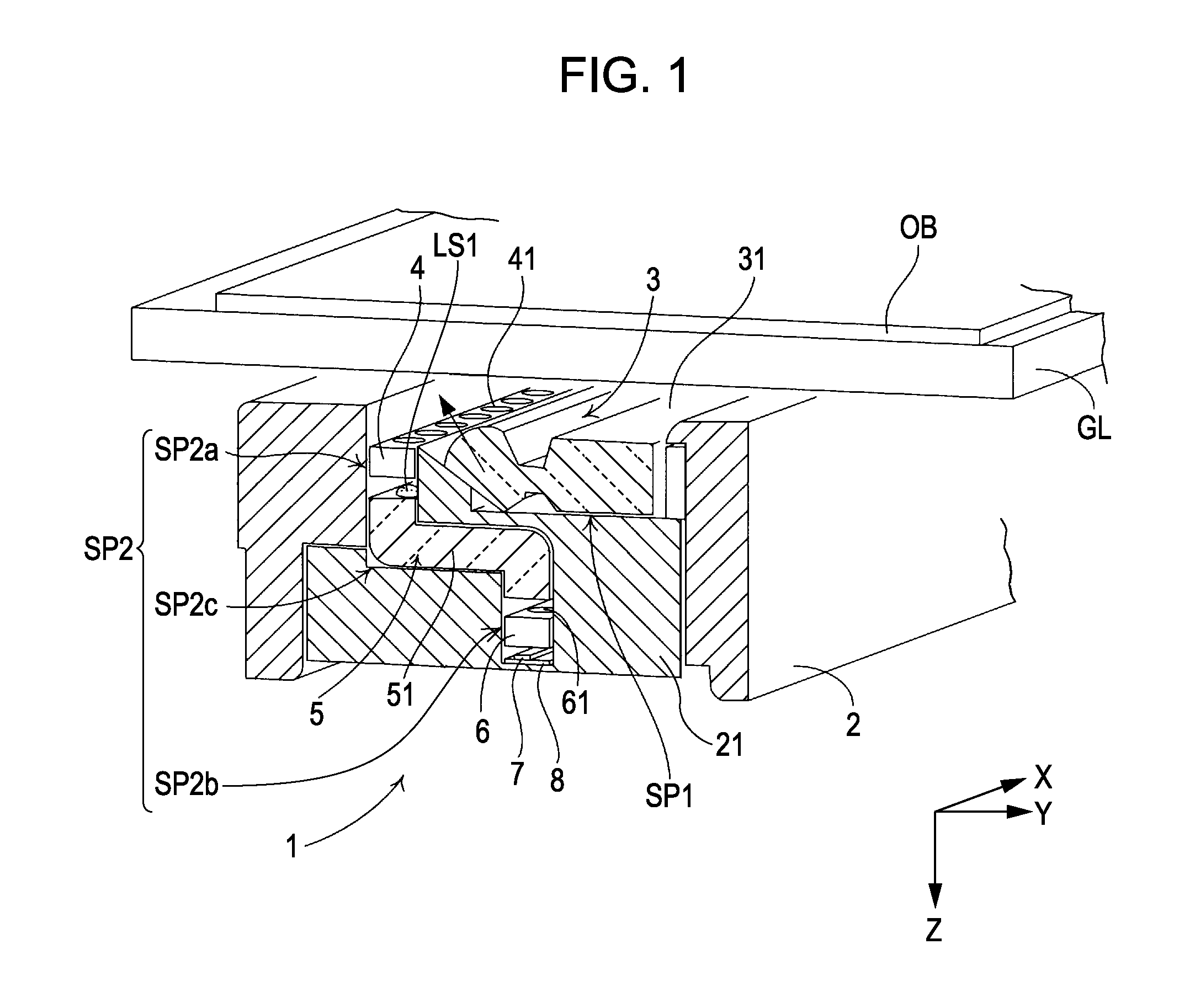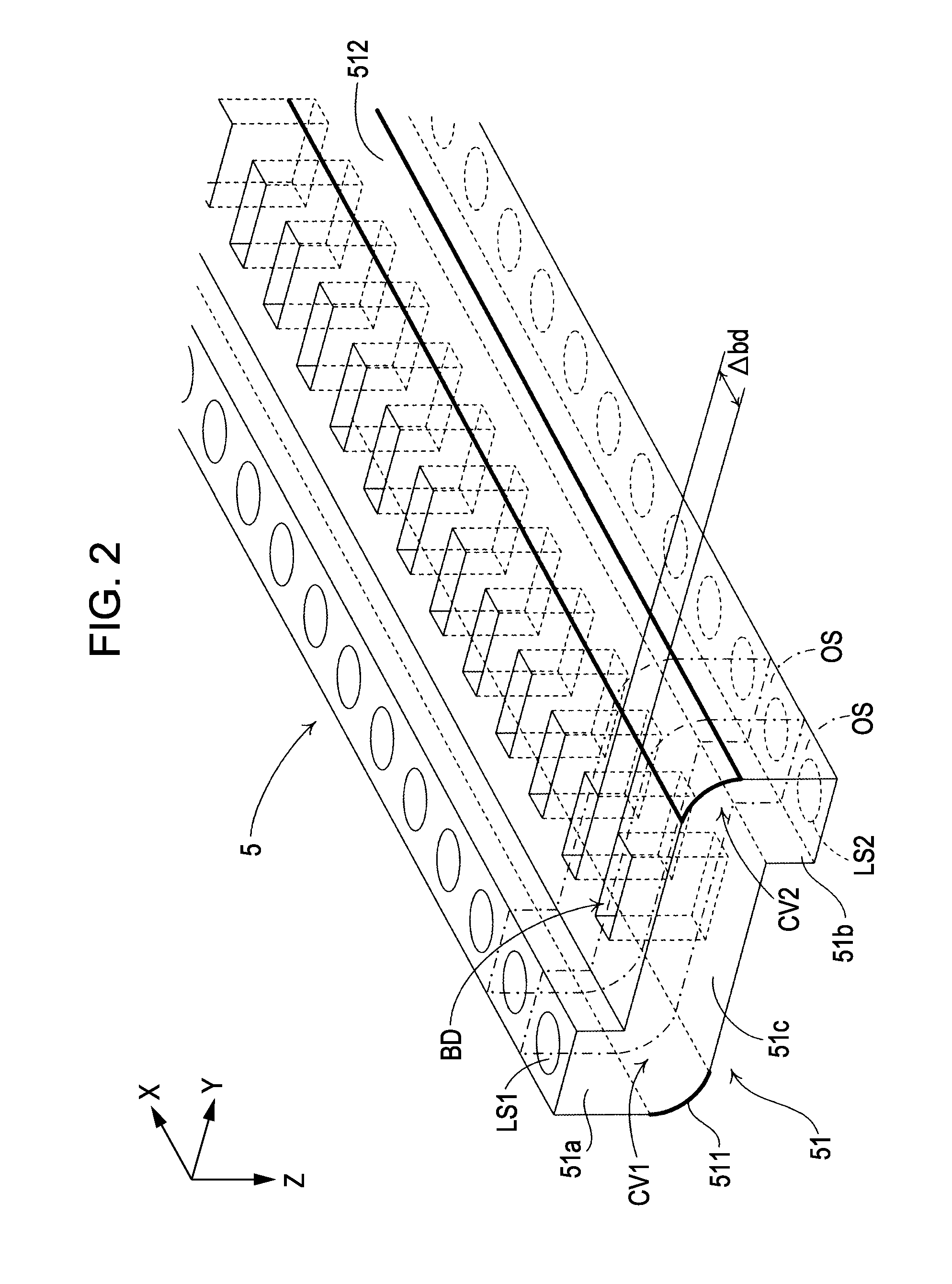Imaging Optical Array And Image Reading Device
a technology of optical array and image reading device, which is applied in the field of imaging optical array, can solve the problems of crosstalk between adjacent imaging optical elements, inability to properly display the function of light shielding members, and inability to erect equal-magnification images of objects to be read
- Summary
- Abstract
- Description
- Claims
- Application Information
AI Technical Summary
Benefits of technology
Problems solved by technology
Method used
Image
Examples
first embodiment
[0028]FIG. 1 shows a partial cross-sectional perspective view illustrating a schematic configuration of a CIS module that is an example of an image reading device according to the invention. FIG. 2 shows a perspective view illustrating a configuration of a lens array according to a first embodiment. In FIG. 1, FIG. 2, and in the following description, XYZ orthogonal coordinates are appropriately shown to illustrate the positional relationship of each member. In addition, arrow sides in the coordinate axes are set as positive sides, and opposite sides of the arrow sides in the coordinate axes are set as negative sides. Furthermore, in the following description, the negative side of the Z-direction is regarded as the upper side, the positive side of the Z-direction is regarded as the lower side, the negative side of the Y-direction is regarded as the left side, the positive side of the Y-direction is regarded as the right side, the negative side of the X-direction is regarded as the f...
second embodiment
[0047]The first embodiment and this second embodiment are different from each other in that whether or not a concave portion CP is formed at both ends of the lens array 5 in the X-direction. Therefore, in the following description, this difference will be mainly described, and corresponding reference numerals will be given to common portions, and description thereof will be appropriately omitted. In addition, since the second embodiment has the same configuration as the first embodiment, it is needless to say that the same effect as the first embodiment can be obtained in the second embodiment.
[0048]In the first embodiment, the void BD is formed between the imaging optical elements OS adjacent to each other in the X-direction. Therefore, the void BD is disposed at both sides of the imaging optical elements OS in the X-direction, respectively, such that light that passes through between the voids BD is supplied for the imaging by the imaging optical elements OS. That is, it may be as...
third embodiment
[0051]In the above-described embodiments, the void BD is formed as a penetration hole that vertically penetrates the lens array 5 (transparent medium). However, an aspect of the void BD is not limited to this, and may have a configuration shown in FIG. 6. Here, FIG. 6 shows a perspective view illustrating a configuration of a lens array according to a third embodiment. That is, as shown in FIG. 6, in the third embodiment, the void BD is a void having the bottom, which is empty from an upper external side of the light guiding portion 51 (horizontal portion 51c) of the lens array 5 (transparent medium) to a position between the imaging optical elements OS adjacent to each other in the X-direction.
[0052]In addition, the main difference between the third embodiment and the above-described embodiments is an aspect of the void BD. Therefore, in the following description, this difference will be mainly described, and corresponding reference numerals will be given to common portions, and de...
PUM
 Login to View More
Login to View More Abstract
Description
Claims
Application Information
 Login to View More
Login to View More - R&D
- Intellectual Property
- Life Sciences
- Materials
- Tech Scout
- Unparalleled Data Quality
- Higher Quality Content
- 60% Fewer Hallucinations
Browse by: Latest US Patents, China's latest patents, Technical Efficacy Thesaurus, Application Domain, Technology Topic, Popular Technical Reports.
© 2025 PatSnap. All rights reserved.Legal|Privacy policy|Modern Slavery Act Transparency Statement|Sitemap|About US| Contact US: help@patsnap.com



